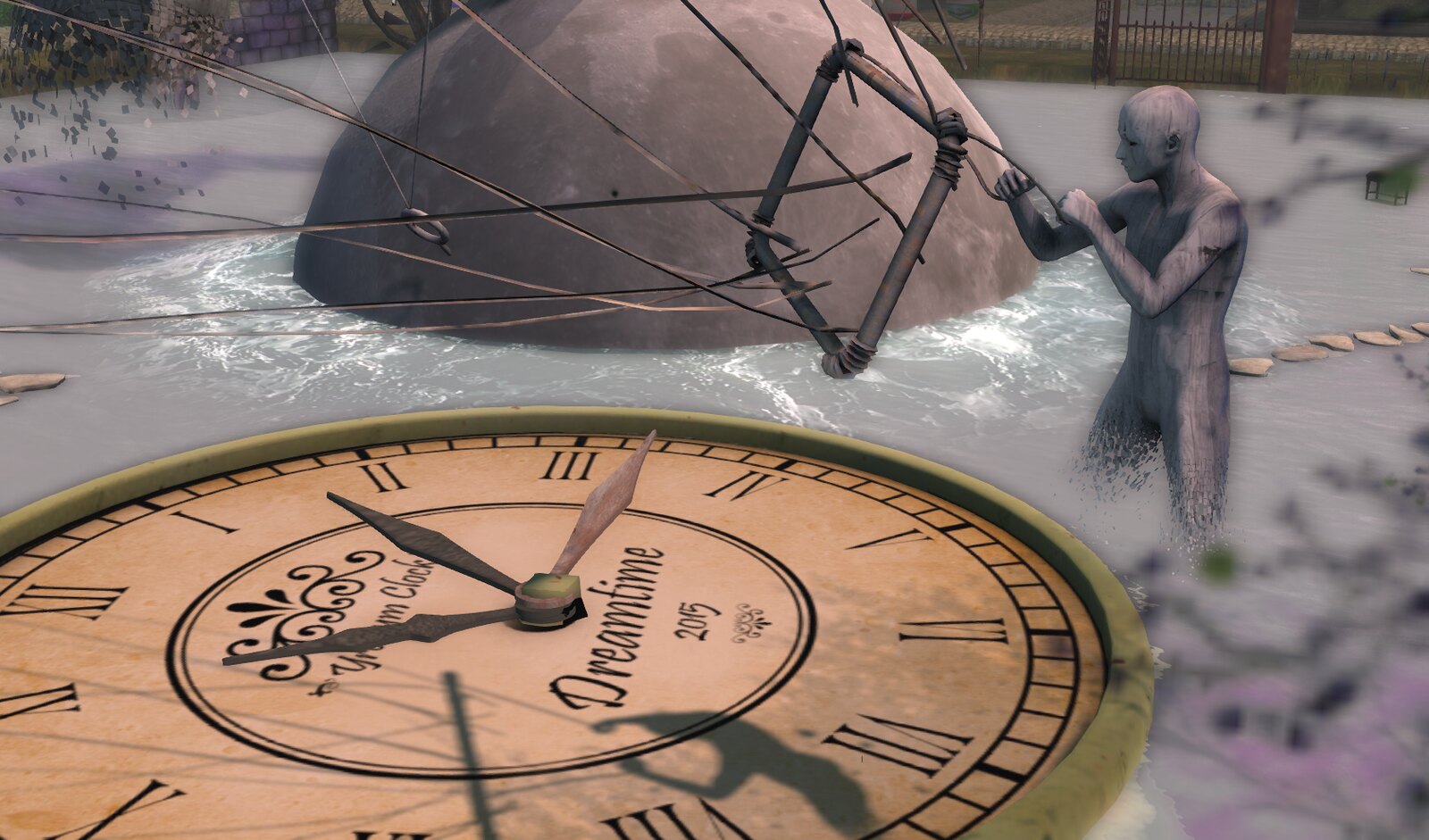What Went Wrong in Second Life. The Painful Truth
We love Second Life. We like it and we are very grateful for the opportunity we had not only to earn money, but to make friends and live a unique experience. Things have changed and times too. The platform isn’t what it used to be, so it’s natural to wonder what went wrong in Second Life.
In an article I wrote a few years ago, I described the three mistakes that led to the failure of Second Life. The first mistake was not investing enough in improving the user experience and the graphics inworld, which resulted in users leaving and the platform losing relevance.
The second mistake was focusing too much on creating a virtual economy in Second Life and not enough on the social and entertainment aspects of the platform. The third mistake was not adapting to the rise of mobile devices and social media, which caused Second Life to miss out on a huge opportunity to reach new audiences and remain relevant.
In this article, which complements the previous one, we will add some new elements, but we will also cover in detail the points that were detailed in the original article that you can read (in Spanish) here:
This is a collaborative article. None of the writer’s first language is English. We apologize for any possible grammatical errors that may appear. We used IA to fix grammar and meaning.
A Technologically Biased Company
To get a better perspective of why Second life failed, we need to know a little more about the company first. Linden Lab supervised engineering teams who worked on specific projects and tasks. Within the company, there were senior employees who likely acted as project coordinators and reported to management. Former employees have directed their complaints towards these senior-level managers.
Between 2007 and 2008, Linden Lab underwent a significant management restructuring, with the more technology-focused sector taking priority over the commercial side. This resulted in the company being primarily led by engineers, despite the fact that the CEOs who held the position until 2013 came from the business and video game industry.
What Residents Needed
Users have expressed dissatisfaction with specific points that have yet to be addressed by Linden Lab today (2023):
Needless to say, Linden did not make any improvements in this regard, nor did they showed interest of any kind.
Communication channels between the company and its users have not accurately reflected the diversity of the Second Life population, often catering only to “geek” users and relying on partial or incorrect feedback. The vast majority of users are adult people with computer knowledge at the user level. They are not geeks, thought technology is not a big mystery. They can learn to use it if it makes sense, is simple and consistent.
Due to its predominantly technical workforce, Linden Lab has always been a company with a strong technical focus. Therefore, it was not uncommon for the solutions provided to residents to be solely technical in nature. If an issue could not be resolved by a programmer, it may have appeared unsolvable. However, residents always had the perception that they did not care.
What Went Wrong in Second Life? Complexity
The failure of Second Life is better explained when there are two significant obstacles that have yet to be addressed by Linden Lab (Today). Firstly, there is a need to improve the viewer, making it simpler and more user-friendly for those with less experience to integrate quickly into the Second Life community. Secondly, there is a need to adapt the technology to cater for less powerful tablets and computers with lower graphic capacities. If they had been able to integrate the virtual world into a web browser, Second Life would have had a chance.
Despite the small technological improvements and minor tasks that have been completed over the years, they have merely served as a temporary mask for the looming tragedy that is the product’s global decline. Fixing a Second Life glitch is not an upgrade. It is important to remember that Second Life is a platform developed from an engineer’s point of view, with hardware requirements typically associated with gamers, yet utilized by users with limited resources and more social than technical interests. This combination has proven detrimental and is the primary reason for the platform’s sustained decline since 2011.
Wrong Graphics
Although the introduction of “mesh” enhanced the graphical quality of Second Life, it came at a significant cost with the loss of users. The implementation was late and poorly executed, with residents being forced to invest financially in new products, and the difficulty of using mesh increasing the complexity of the platform. Mesh implementation went wrong in Second Life at different levels.
On the other hand, platforms with worse graphical quality such as Minecraft or Roblox have managed to succeed. Their primary customer base is children, not adults. They understood the need to provide an easy, attractive, and above all, simple world for their users. Not because it was easier, but it was what they wanted.
The introduction of mesh in Second Life was belated and rushed, occurring when the virtual world was already in decline. The company failed to consider the needs of its residents, resulting in a botched implementation of “rigged mesh” that became one of Linden Lab’s major mistakes.
Amigo Uriza

Not Understanding the Product
Linden Lab had a narrow perspective of what was truly occurring inworld. To some extent, they cannot be held accountable for this, given that freedom of action and operation has always been integral to the product culture. Furthermore, generating technological solutions to problems caused by users is not a quick process, and must be carefully analyzed to accurately calculate the potential impact on other areas.
While it may be audacious to claim that the failure of Second Life can be attributed to Linden Lab’s narrow-mindedness, I’m afraid it holds some truth.
What Went Wrong In Second Life? Narrow-mindedness in Their Business Model
One aspect that has consistently eluded Linden Lab’s radar is the company’s business model. The organization has reaped substantial profits from two sources of income: currency exchange commissions (commissions for depositing and withdrawing money in the virtual world) and the virtual land rental business. Both of these have been a monopoly, directly or indirectly controlled by Linden Lab.
In Second Life, the land and the avatar are two crucial components that rely on each other for existence. Linden Lab, the company behind the virtual world, made money by selling land while the residents created and sold their own products and services to make money.
Land vs Avatar
Second Life is a virtual world that has always revolved around two different and distinct entities: land and avatar. Two symbiotic entities that cannot exist without each other. Without regions, avatars cannot exist and without avatars, regions would be empty.
With so much revenue from the server’s side, it’s understandable that they focused on improving the server and region technology. They didn’t prioritize investing in avatar improvements because they saw it as something that only benefited the users, and they didn’t see a straight profit. However, this was a mistake because the avatar was an important part of the product (Second Life) and improving it could have benefited the company in the long run. That narrow-mindedness in their business model also gives a clue why Second Life failed.
Linden Lab failed to recognize the true value of the avatar and their priority was always the land. They mistakenly believed that people bought land to keep their avatar, when in reality, users bought land when they had developed a fondness for their avatar. The avatar has always been the central focus of Second Life, and it is what drives user engagement, not the other way around.
Money & Revenue
Linden Lab opted to generate income from the land and turned over everything related to the avatar to the residents, which developed their own business opportunities: products, goods and services. The company would maintain control over the macroeconomy, while the microeconomy would serve as the driving force for user growth and stimulation. Plan exceeded expectations with the logo “Your world your imagination”
Linden Lab did not initially view content creators as key architects of success, even though their contribution was integral to the platform’s continued relevance. Without content, the platform loses its purpose and inevitably fades away. If Linden Lab had actively listened to content creators, user retention rates could have been significantly higher. The company failed to grasp the significance of avatars in maintaining balance of power within its economy. Similar to car companies neglecting the importance of good roads to sell more cars.
Not Everything Can Be Fixed with Code
What went wrong in Second Life had a lot to do with the difficulty to keep the business model up.It was a dilemma between evolving or preserving the model. The more you mess with the avatar, the more you damage the resident’s revenue. It is an analogous situation to what happens when companies hurt their suppliers and they stop supplying.
Linden Lab’s most significant effort to enhance Second Life was the implementation of “mesh” technology. This not only elevated the platform’s overall visual appeal but also revolutionized the business model for in-game designers, making it significantly more complex.
As a result of the shift to 3D modeling, Second Life lost some of its original charm and variety. The standardization of “mesh” led to a reduction in the number of creators and a decrease in the diversity of content available. It remains unclear whether technical, legal, or economic issues prevented Linden Lab from returning to the old model and increasing the diversity of content. However, after the implementation of “mesh” as the standard, Linden Lab failed to take any steps to address this issue, such as allowing users to create their mesh versions accessible from Second Life.
Not Understanding the Client or the Resident
Linden Lab’s approach always seemed to prioritize attracting new clients over retaining the existing ones, despite the fact that both were necessary for the platform’s success. Neglecting existing users while actively seeking new ones was a fruitless strategy. It was essential to listen to the needs and concerns of current customers, who could have offered valuable insights into how to improve the platform. Linden Lab’s effort were futile, they were like trying to fill a bag with a hole in it, rendering the effort pointless.
When one takes a rational perspective of the Second Life user base, it’s easy to draw the wrong conclusions. Although the platform is home to an abundance of engineers, creatives, nerds, and eccentric individuals, there is a homogeneous group of users that often goes unnoticed. This group comprises the primary driver of Second Life’s internal economy, and they have directed their economic influence towards the avatar.
One of the major criticisms of Second Life was its lack of a clear objective. Numerous users expressed frustration that they did not have a sense of direction. You read: “What is the point of Second Life?” A more effective strategy would have been to identify the activities that engaged users and work to enhance the platform’s dynamics accordingly. Instead, they relied on more code and less marketing instinct.
My Barbie, My Imagination
This market segment is primarily composed of women, although men also participate, between the ages of 40 and 65 with considerable disposable income, investing from $50 to $120 monthly into their favorite hobby. Their favorite pastime is dressing up and applying makeup to their Second Life avatar, which has become their new “Barbie” doll. Despite being overshadowed by more eccentric groups, these users play a crucial role in driving the platform’s economy.

This market segment is primarily comprised of women in their 40s to 65s who long for their youthful beauty. They instinctively create or shape a virtual persona to reflect their desired image – one that is attractive, elegant, and highly desirable. For many middle-aged women, their avatar becomes a vessel for projecting their innermost desires and yearnings to feel youthful again. With the ability to change their avatar’s clothes, hair, and skin color, they can always be beautiful.
Although not technically skilled, they are eager to improve their avatar and will spend whatever it takes. They enjoy playing virtual hairstylists and dress up games, which may have been something they never got to experience as children. The failure of Second Life had a lot to do with the inability to identify their “buyer persona” and cater to their virtual needs in an effective manner.
This particular market segment, composed mainly of mature women, has been the driving force behind the success of Second Life. While other gamers may prefer action-packed games like WOW, Steam, and Call of Duty, this group finds enjoyment in dressing up their avatars and experimenting with different styles.
Unfortunately, what went wrong in Second Life had more to do with:
Right Under Their Nose: Instagram & Social Networks
Linden Lab deserves credit for being among the first social networks, much like MySpace. However, Second Life was never intended to have any impact beyond its own environment. As traditional social media platforms such as Facebook began to gain popularity, Linden failed to respond appropriately. The situation with Instagram is particularly shocking because it would have been straightforward for Linden to clone or simulate the network within Second Life’s framework.
What went wrong in Second Life was Linden’s inability to provide users with a social network that had the same cultural and community aspects as the virtual world, while also being similar to existing social networks. Meanwhile, Flick was able to provide a more efficient solution to users.
A Few Caveats
Discussing the issues of a company like Linden Lab can be challenging without coming across as arrogant, given that Second Life is a distinct and groundbreaking product with no real equivalents. Despite lacking direct competition, Second Life’s decline has been consistent and unrelenting.
In my opinion, the growth of the virtual economy was an unintended consequence of the company’s initial intention to empower customers with creativity. Why Second Life failed if the decision to relinquish creative control was successful? Because it could not keep up with advancements in technology.
Gabs Voom

The avatar, despite being the driving force behind the virtual economy and a key factor in user retention, was consistently undervalued by Linden Lab due to its lack of direct benefits for the company.
Amigo Uriza

Linden Lab failed to simplify the environment to attract new customers and adapt Second Life to new technologies such as tablets and smartphones. In 2013, it was evident that Second Life had a bleak future because they were unable to keep up with technological advancements and simplify the existing features.
To fully comprehend the failure of Second Life, one must acknowledge the company’s neglect towards their most devoted market segment. Linden Lab’s response was to create an even more complex and biased platform, such as “Sansar”. The negative impact wasn’t limited to just user frustration; it also caused residents to lose faith in Second Life.
When Did Second Life Fail?

Second Life fail began when it disregarded user feedback, failed to evaluate its product beyond a technical lens, and implemented mesh without adequately considering its impact or applying solutions to enhance the virtual environment with mesh tecnology.
Post written by:

Avatar since 2007
Avatar since 2007
Featured Picture Credits:





Thank you both for your time.
Thought, I would like to point out that mesh has improved significantly the quality on the grid. Mesh was a great improvement, but not for everyone; I guess.